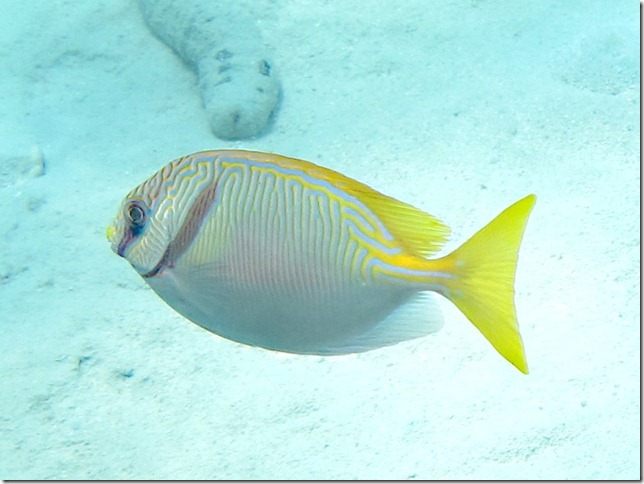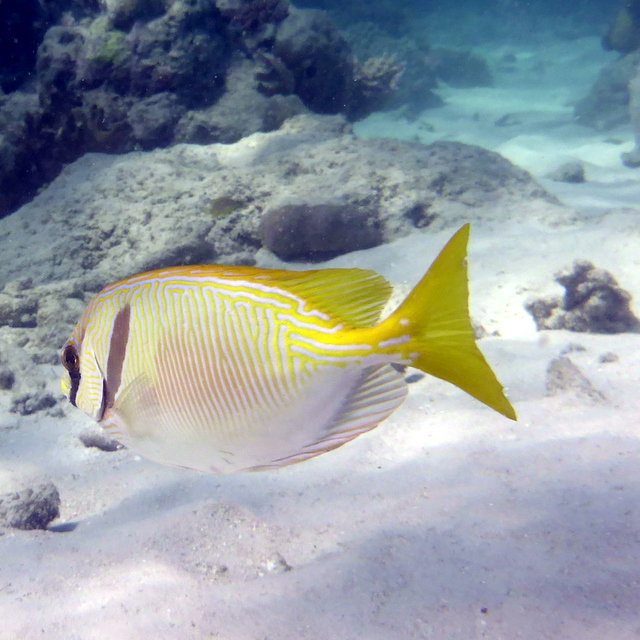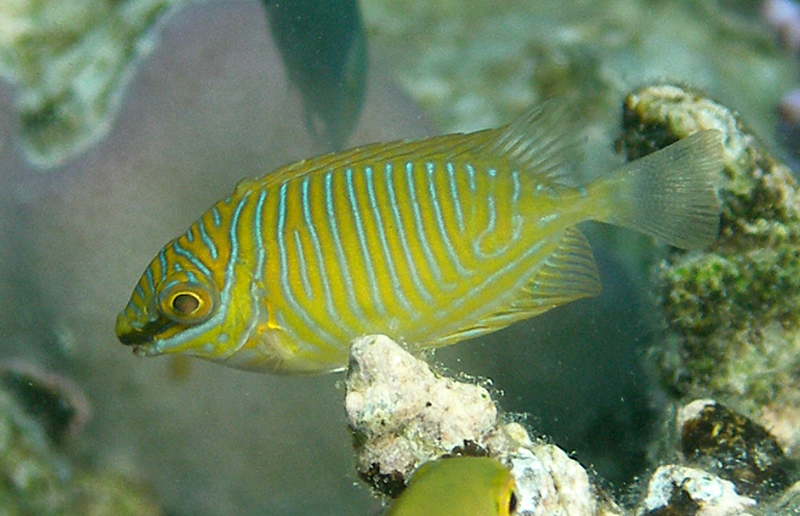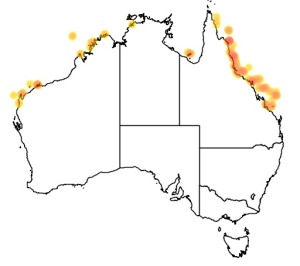Colours
Distinguishing features
A medium sized yellowish fish with fine vertical blue lines on the body, a yellow tail, and two dark bars through the head region. Usually seen in pairs, although this species will form large feeding schools.
Size
- Up to 25 cm (Standard length)
Depth range
- Depth range data is not yet available.
Synonyms
Interesting facts
-
These two fish need each other, they feed on algae in crevices and under rubble and while one is feeding, (with its view concealed) the other watches for predators. This means that they spend almost 90% of the time within 5m of each other. It must also mean that they share a language, a way to tell the other one there is danger OR “you go first, I’ll watch” and just maybe, in a subtle thumping language beyond our perception,
“I love you”.
Distribution
Distribution and habitat preferences
Shallow reef flat areas near good coral cover in lagoons and other sheltered backreef habitats.
Can be found in most locations around the island.
Behaviour
The Bluelined Rabbitfish is a roving herbivore, moving around the reef in pairs or schools and feeding on turf algae, seagrass and macroalgae. The large schools target the territories of herbivorous damselfishes, using their superior numbers to swamp the defenses of the Pomacentrids. They can quickly strip a territory of algae within a few minutes. This species spawns in groups during the warmer months, when fast running tidal currents coincide with dawn and dusk. They are mature at about 2 years of age, and the spawning takes place at a regular lunar phase, usually around the first quarter moon. There is little published information on the demography or ecology of the Siganidae, but they are likely to be long-lived fishes. Juveniles look similar to the adults, but are relatively uncommon.
Web resources
Danger
- unspecified - The dorsal and ventral fin spines are poisonous, so care should be taken if handling this fish. First Aid - click here
References
- Borsa, P., S. Lemer and D. Aurelle (2007). Patterns of lineage diversification in rabbitfishes, Molecular Phylogenetics and Evolution, 44: 427-435. LIRS catalog number 90138.
- Choat, J.H., K.D. Clements and W.D. Robbins (2002). The tropic status of herbivorous fishes on coral reefs. 1. Dietary analyses, Marine Biology, 140: 613-623. LIRS catalog number 729.
- Choat, J.H., K.D. Clements and W.D. Robbins (2004). The trophic status of herbivorous fishes on coral reefs 2: Food processing modes and trophodynamics, Marine Biology, 145: 445-454. LIRS catalog number 1202.
- View all references






